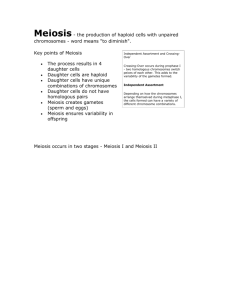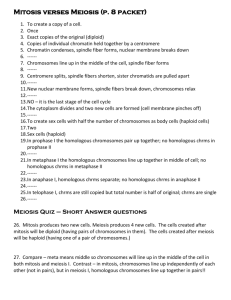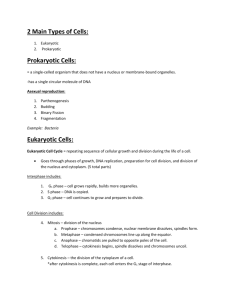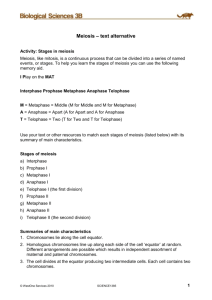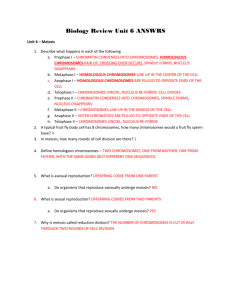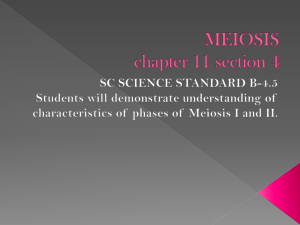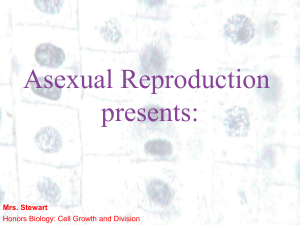CH 11 Meiosis
advertisement
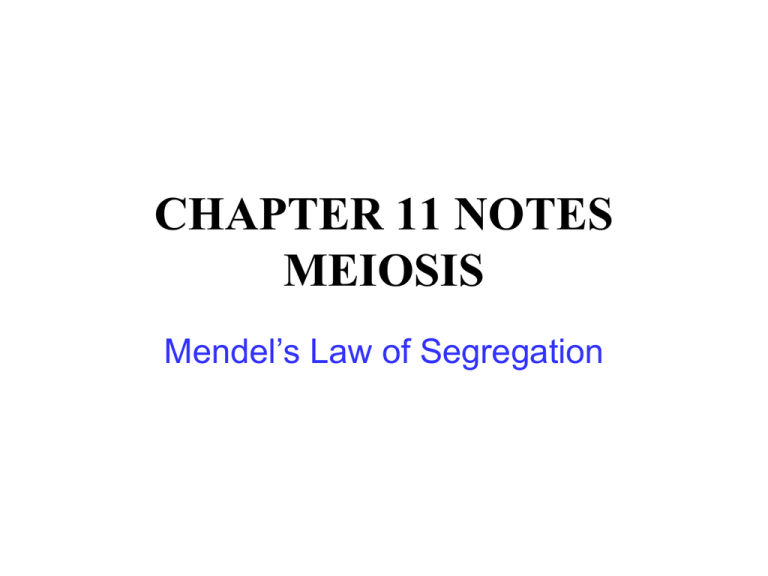
CHAPTER 11 NOTES MEIOSIS Mendel’s Law of Segregation Definition: a process of reduction division that produces gametes in which the number of chromosomes per cell is cut in half (haploid) through the separation of homologous chromosomes. Homologous chromosomes: chromosomes that have the same genes but different variations because one comes from mom and one from dad. • A cell that contains both sets of homologous chromosomes is diploid, which means “two sets”. (2n) • A cell that contains only one set of chromosomes is haploid. (n) CELL CYCLE: Interphase Meiosis I Cytokinesis Meiosis II Cytokinesis INTERPHASE: just like interphase before mitosis • G1: cells grow, protein production • S: DNA replication • G2: productions of new organelles including centrioles MEIOSIS I: PROPHASE I: • Chromatin coils into chromatids and the homologous pairs of chromatids come together to form a tetrad. • Crossing over occurs where portions of the homologous chromosomes are exchanged. • The rest of prophase is very similar to mitosis. Why is crossing over so important? Crossing over allows for the random mixing of genes (genetic recombination) which adds genetic variety to a species so that no two individuals are exactly the same. METAPHASE I: • Tetrads (doubled homologous chromosomes) line up at the equator of the spindle. ANAPHASE I: • Homologous chromosomes (tetrad) separate and are pulled to the poles (the centromeres do NOT split). TELOPHASE I: • Chromosomes uncoil, spindle breaks down. The nuclear membranes and nucleoli reform. • Cytoplasm divides (cytokinesis) to form two cells. Cells are haploid at the end of meiosis I NOTE: There is NO interphase between meiosis I and meiosis II. Why is this important? So that each new cell will only have half (haploid) the number of chromosomes as the original parent cell. PROPHASE II: METAPHASE II: ANAPHASE II: TELOPHASE II/ CYTOKINESIS: *just like mitosis except that there is only half the number of chromosomes. Prophase II Metaphase II Anaphase II Telophase II What is the end result of meiosis? Four genetically different haploid cells that containing half the number of chromosomes. What was the end result of mitosis? Two diploid cells genetically identical to the original parent cell.


